 W
WThe Maserati 4CL and its derived sister model the Maserati 4CLT are single-seat racing cars that were designed and built by Maserati. The 4CL was introduced at the beginning of the 1939 season, as a rival to the Alfa Romeo 158 and various ERA models in the voiturette class of international Grand Prix motor racing. Although racing ceased during World War II, the 4CL was one of the front running models at the resumption of racing in the late 1940s. Experiments with two-stage supercharging and tubular chassis construction eventually led to the introduction of the revised 4CLT model in 1948. The 4CLT was steadily upgraded and updated over the following two years, resulting in the ultimate 4CLT/50 model, introduced for the inaugural year of the Formula One World Championship in 1950. In the immediate post-war period, and the first two years of the Formula One category, the 4CLT was the car of choice for many privateer entrants, leading to numerous examples being involved in most races during this period.
 W
WThe Maserati 6CM is an Italian single-seater racing car, made by Maserati of Modena from 1936 to 1940 for the Voiturette racing class. Twenty-seven were built on the Maserati 4CM frame, with front suspension as on the Maserati V8RI, and had a successful racing career from 1936 to 1939. The 6CM was introduced to the world at the 1936 Milan Motor Show. Maserati spent much of its early years manufacturing cars for privateers in the racing field. The Maserati 6CM is no exception.
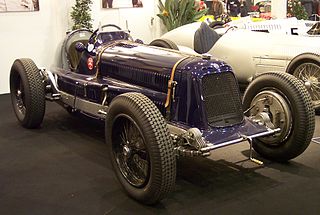 W
WThe Maserati 8C was a Grand Prix race car built by Maserati between 1931 and 1933. The 8C was being designed by Alfieri Maserati in the early 1930s; however, he died before its completion. The chassis was that of the Tipo 26M, and it was initially fitted with a Tipo 26M engine with its cylinders bored out by 4 mm to arrive at its limit of 2.8 litres. Development of the new 3.0 L engine continued and it was constructed for racing in 1932. The car won the 1933 French Grand Prix and Sir Henry Birkin achieved third place driving it in the Tripoli Grand Prix. However, it was not very successful in other races. The car featured some of the world's earliest hydraulic brakes. The Tipo 8C 3000 was the final two-seater Grand Prix Maserati.
 W
WThe Maserati 8CM was a Grand Prix race car produced by Italian manufacturer Maserati in Bologna between 1933 and 1935.
 W
WThe Maserati 150 GT was a prototype sports car produced by Maserati in 1957. It was a unique example of the Maserati four-cylinder road-going car clothed in a spyder bodywork.
 W
WMaserati 150S were twenty-seven racing cars made by Maserati of Italy alongside the Maserati 200S, to take over for the aging Maserati A6GCS racing variants.
 W
WThe Maserati 200S is a racing car made by Italian automobile manufacturer Maserati as a successor to the Maserati A6GCS. 28 cars were made in total. The development of the 200S, codenamed Tipo 52 started in 1952, led by Giulio Alfieri. In response to Ferrari's 500 Mondial racing car which featured a 4 cylinder engine and was quite successful in sports car racing. The car had a 1,994.3 cc (2.0 L) inline-four light-alloy engine, featuring dual Overhead valves per cylinder and DOHC camshafts, double Weber 50DCO3 or 45DCO3 carburetors. The engine was rated at 190 PS at 7,500 rpm. Many chassis components were identical to the Maserati 150S in order to speed up development, except the rigid rear axle inherited from the Maserati A6.
 W
WThe Maserati 250F was a racing car made by Maserati of Italy used in '2.5 litre' Formula One racing between January 1954 and November 1960. Twenty-six examples were made.
 W
WThe Maserati 300S was a racing car produced by Maserati of Italy between 1955 and 1958, which competed in the FIA's World Sportscar Championship. Twenty-six examples were produced.
 W
WMaserati 350S is a series of three racing cars made by Italian automobile manufacturer Maserati, built by Giulio Alfieri, with aluminum body design by Medardo Fantuzzi, both Maserati engineers. The 350S was built to experiment with a new straight-six engine while a V8 engine was being developed in the factory.
 W
WThe Maserati Biturbo is a family of executive grand tourers produced by Italian automobile manufacturer Maserati between 1981 and 1994. The original Biturbo was a two-door, four-seater notchback coupé featuring, as the name implies, a two-litre V6 engine with two turbochargers and a luxurious interior.
 W
WThe Maserati 450S is a racing car made by Italian automobile manufacturer Maserati for participating in FIA's endurance World Sportscar Championship racing. A total of nine were made.
 W
WThe Maserati 3200 GT is a four-seater grand tourer produced by Italian automobile manufacturer Maserati from 1998 to 2002, replacing the Shamal as the flagship grand tourer of the marque. The luxury coupé was designed by Italdesign, whose founder and head Giorgetto Giugiaro previously designed, among others, the Ghibli, Bora and Merak. Interior design was commissioned to Enrico Fumia and completed by 1995. 4,795 cars were produced before it was replaced by the Maserati Coupé.
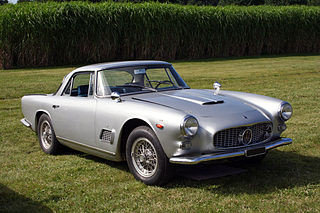 W
WThe Maserati 3500 GT and the Maserati 3500 GT Convertibile are 2-door coupé and convertible grand tourers made by Italian car manufacturer Maserati between 1957 and 1964. It was a seminal vehicle for Maserati as the company's first successful attempt at the Gran Turismo market and series production.
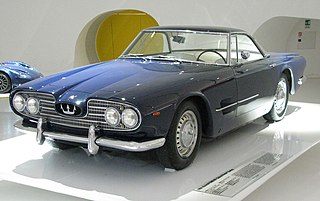 W
WThe Maserati 5000 GT is a 2-door coupé car, made by Italian automobile manufacturer Maserati from 1959–1966. A total of thirty-four were produced with bodies made by eight different Italian coach builders.
 W
WMaserati A6 were a series of grand tourers, racing sports cars and single seaters made by Maserati of Italy between 1947 and 1956. They were named for Alfieri Maserati and for their straight-six engine.
 W
WThe Maserati Barchetta is a mid-engine racing car, like the 350 and 450S, that was designed by Carlo Gaino of the Synthesis Design, an Italian design house.
 W
WThe Maserati Biturbo is a family of executive grand tourers produced by Italian automobile manufacturer Maserati between 1981 and 1994. The original Biturbo was a two-door, four-seater notchback coupé featuring, as the name implies, a two-litre V6 engine with two turbochargers and a luxurious interior.
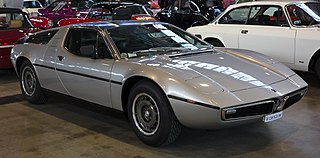 W
WThe Maserati Bora is a mid-engine two-seat coupe manufactured by Maserati from 1971 to 1978. In common with other Maserati cars of the era, it is named after a wind, Bora being the wind of Trieste. The Bora ended Maserati's reputation for producing fast but technologically out of date cars, being the first Maserati with four wheel independent suspension. In contrast, competitor Lamborghini had used independent suspension in 1964.
 W
WThe Maserati Coupé and Spyder are a series of grand tourers produced by Italian automaker Maserati from 2001 to 2007. The two nameplates refer to the four-seater coupé and two-seater convertible models, respectively. The design of both models was based on the preceding 3200 GT, which was not sold in the US. Due to the confusing nature of the names "Maserati Coupé" and "Maserati Spyder" the Coupé and Spyder are both commonly referred to as the 4200 GT, which is an evolution of the prior model name and a reference to the increase in engine displacement from 3.2 L (3,217 cc) to 4.2 L (4,244 cc).
 W
WMaserati Ghibli is the name of three different cars produced by Italian automobile manufacturer Maserati: the AM115, a V8 grand tourer from 1967 to 1973; the AM336, a V6 twin-turbocharged coupé from 1992 to 1998; and the M157, an executive saloon from 2013 onwards.
 W
WThe Maserati Ghibli (M157) is an executive car produced by Italian automobile manufacturer Maserati since 2013. The car was unveiled to the public at the 2013 Shanghai Motor Show.
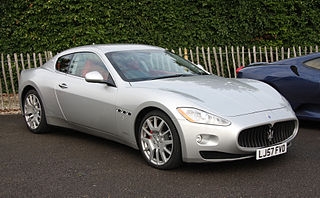 W
WThe Maserati GranTurismo and GranCabrio are a series of a grand tourers produced by the Italian automobile manufacturer Maserati from 2007 to 2019. They succeeded the 2-door V8 grand tourers offered by the company, the Maserati Coupé, and Spyder. The model was initially equipped with a 4.2-litre V8 engine developed in conjunction with Ferrari. The GranTurismo platform was derived from Maserati M139 platform of Maserati Quattroporte V, with double-wishbone front and rear suspension. The grand tourer emphasizes comfort in harmony with speed and driver-enjoyment.
 W
WThe Maserati Indy is a four-seater fastback grand tourer produced by the Italian car manufacturer Maserati from 1969 to 1975. It was the first car produced under the Citröen ownership.
 W
WThe Maserati Karif is a luxury coupé produced by Italian automobile manufacturer Maserati between 1988 and 1991. It was designed to be luxurious, but also sporty and agile to allow the driver to "feel like a racing driver again or for the first time". At the car's unveiling, Alejandro de Tomaso declared a very limited production run of 250 examples. In the end, only 221 units were sold over the time the car was built. Production dates are not entirely clear, but the last cars were sold late in the summer of 1992, long after they had been built.
 W
WThe Maserati Khamsin is a grand tourer produced by Italian automobile manufacturer Maserati between 1974 and 1982. The Khamsin was sold alongside the DeTomaso-based Maserati Kyalami — also a V8 2+2 GT car - between 1976 and 1982.
 W
WThe Maserati Kyalami is a four-seat GT coupé produced by Italian automobile manufacturer Maserati from 1976 to 1983. The car was named after the Kyalami Grand Prix Circuit in South Africa where a Maserati-powered Cooper T81 had won the 1967 South African Grand Prix.
 W
WThe Maserati Levante is a mid-size luxury crossover SUV based on the Kubang concept car that debuted at the 2011 Frankfurt Auto Show, and built by Maserati at the Mirafiori factory in Turin, Italy starting in 2016. Produced and assembled at Maserati's Turin plant, the Levante went on sale in Europe in May 2016, and in North America in September 2016.
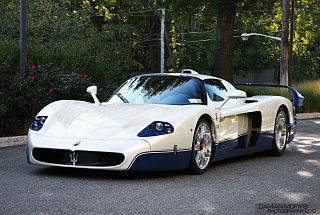 W
WThe Maserati MC12 is a limited production two-seater sports car produced by Italian car maker Maserati to allow a racing variant to compete in the FIA GT Championship. The car entered production in 2004, with 25 cars produced. A further 25 were produced in 2005, making a total of 50 cars available for customers. With the addition of 12 cars produced for racing, only a total of 62 of these cars were ever produced.
 W
WThe Maserati MC20 is an upcoming two-seater, mid-engined sports car that will be produced by Italian car manufacturer Maserati and was originally scheduled to debut in May 2020. Maserati announced a racing variant to be also offered. The Maserati Innovation Lab was responsible for the development of the new car and an electric option will also be produced. Maserati is also testing a fully electric powertrain. The new sports car will be produced at the Maserati Modena plant that is undergoing necessary modernization. The new car's logo appeared on a Maserati-sponsored Multi 70 trimaran's mainsail that was due to race in the RORC Caribbean 600. The debut along with brand redesign was rescheduled for September 2020 in Modena.
 W
WThe Maserati Merak is a mid-engined 2+2 sports car produced by Maserati between 1972 and 1983. The Merak was closely related to the Maserati Bora, sharing part of its structure and body panels, but was powered by a 3.0 L V6 in place of the latter's 4.7 L V8. The extra cabin space gained by fitting a smaller and more compact powertrain was used to carve out a second row of seats—suitable for children or very small adults—making the Merak not just a less expensive alternative to the Bora but also a 2+2.
 W
WThe Maserati Mexico is a 4-seater grand touring coupé produced by Italian automobile manufacturer Maserati between 1966 and 1972. It was based on the second series of the original AM107 Maserati Quattroporte, and it was powered by the same 4.2 and 4.7 L V8 engines.
 W
WThe Maserati Mistral is a 2-seat gran turismo produced by Italian car manufacturer Maserati between 1963 and 1970. The successor to the 3500 GT, it was styled by Frua and bodied by Maggiora of Turin. A total of 828 coupés and 125 Spyders were built.
 W
WThe Maserati Quattroporte is a four-door full-size luxury sports saloon produced by Italian automobile manufacturer Maserati. The name translated from Italian means "four doors". The car is currently in its sixth generation, with the first generation introduced in 1963.
 W
WThe Maserati Quattroporte is a four-door full-size luxury sports saloon produced by Italian automobile manufacturer Maserati. The name translated from Italian means "four doors". The car is currently in its sixth generation, with the first generation introduced in 1963.
 W
WThe Maserati Quattroporte is a four-door full-size luxury sports saloon produced by Italian automobile manufacturer Maserati. The name translated from Italian means "four doors". The car is currently in its sixth generation, with the first generation introduced in 1963.
 W
WThe Maserati Quattroporte is a four-door full-size luxury sports saloon produced by Italian automobile manufacturer Maserati. The name translated from Italian means "four doors". The car is currently in its sixth generation, with the first generation introduced in 1963.
 W
WThe Maserati Quattroporte is a four-door full-size luxury sports saloon produced by Italian automobile manufacturer Maserati. The name translated from Italian means "four doors". The car is currently in its sixth generation, with the first generation introduced in 1963.
 W
WThe Maserati Quattroporte is a four-door full-size luxury sports saloon produced by Italian automobile manufacturer Maserati. The name translated from Italian means "four doors". The car is currently in its sixth generation, with the first generation introduced in 1963.
 W
WThe Maserati Quattroporte is a four-door full-size luxury sports saloon produced by Italian automobile manufacturer Maserati. The name translated from Italian means "four doors". The car is currently in its sixth generation, with the first generation introduced in 1963.
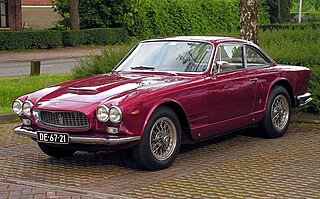 W
WThe Maserati Sebring was a two-door 2+2 coupé manufactured by Maserati from 1962 until 1968. Based on the Maserati 3500, the Sebring was aimed at the American Gran Turismo market and named after Maserati's 1957 racing victory at the 12 Hours of Sebring. A single two-seat spyder was built by Vignale in 1963 but did not enter production.
 W
WThe Maserati Shamal is a two-door grand touring coupé produced by Italian automobile manufacturer Maserati from 1990 to 1996. In keeping with an established Maserati tradition, it is named after a wind: shamal, a hot summer wind that blows in large areas of Mesopotamia, particularly in the large plain between the Tigris and Euphrates.
 W
WThe Maserati Coupé and Spyder are a series of grand tourers produced by Italian automaker Maserati from 2001 to 2007. The two nameplates refer to the four-seater coupé and two-seater convertible models, respectively. The design of both models was based on the preceding 3200 GT, which was not sold in the US. Due to the confusing nature of the names "Maserati Coupé" and "Maserati Spyder" the Coupé and Spyder are both commonly referred to as the 4200 GT, which is an evolution of the prior model name and a reference to the increase in engine displacement from 3.2 L (3,217 cc) to 4.2 L (4,244 cc).
 W
WChrysler's TC by Maserati is a jointly developed car by Chrysler and Maserati. It was positioned as a grand tourer and introduced at the 1986 Los Angeles Auto Show. It is a "Q" body built on a modified second generation Chrysler K platform. After two years of development delays, the TC became available in late-1988 and a total of 7,300 units were manufactured in Milan, Italy through 1990. All cars sold as 1991 models were manufactured in 1990.
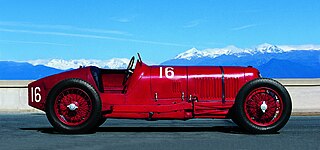 W
WThe Maserati Tipo 26 was a model of Grand Prix racing car and was the first car built by Italian manufacturer Maserati, for a total of 11 examples, between 1926 and 1932.
 W
WThe Maserati Tipo 26B was a racing car built by Italian manufacturer Maserati between 1927 and 1930, in a total of six examples and one additional engine.
 W
WThe Maserati Tipo 26M was a model of Grand Prix race car produced by Italian manufacturer Maserati in Bologna, for a total of 13 units, between 1930 and 1932.
 W
WThe Maserati Tipo 60/61 are a series of sports racing cars produced between 1959 and 1961 by Italian automobile manufacturer Maserati for privateers racing in sports car events including the 24 Hours of Le Mans in the 2-litre and 3-litre racing category. It used an intricate tubular space frame chassis, containing about 200 chro-moly steel tubes welded together, arranged triangular formation at high stress areas of the chassis, hence the nickname "Birdcage". This method of construction provided a more rigid and, at the same time, lighter chassis than other racing cars of the time.
 W
WThe Maserati Tipo 151 is a racing car manufactured by Italian automobile manufacturer Maserati for the 1962 LeMans season to compete in the experimental GT car class. Three cars were built in total, one for Johnny Simone of Maserati France with a red exterior colour and white tri-stripes whilst two were built for Briggs Cunningham for his racing team. These cars had a white body with two blue stripes.
 W
WThe Maserati V8RI was a model of racing car produced by Italian manufacturer Maserati of Modena in 1936, for total of four units.